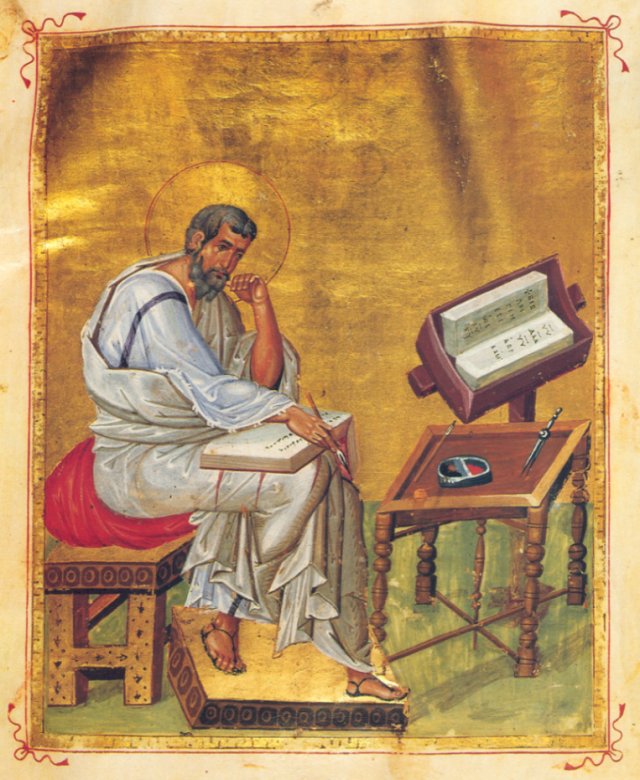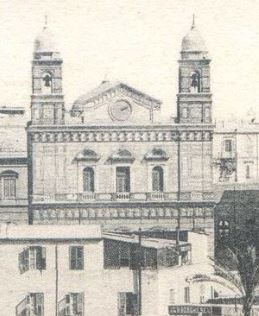

Home News & Events Study Research Members & Staff Publications Friends of the Hellenic Institute Contact Us
HS5128 Byzantine Autographs of the Palaeologan Period
(13th-15th century)
This is an advanced course in Greek Palaeography addressed to students with reading knowledge of Greek, who attend mainly the intercollegiate University of London MA programme in Late Antique and Byzantine Studies, and MA Classics, and RHUL MA History: Hellenic Studies, or pursue MPhil/PhD studies in the field of Classical and Byzantine studies. This course is a progression of the HS5123 Elementary Greek Palaeography and HS5124 Greek Palaeography. It is offered on alternative years with HS5127 Greek Hands of the Palaeologan Period (13th-15th century).
The course examines Byzantine autograph manuscripts of distinguished Byzantine scholars and teachers who played an important role on the cultural and political scene in the last period of the Byzantine Empire. These autographs provide evidence for the use of both calligraphic and personal scripts, often by the same author, who made extensive use of abbreviations, ligatures and symbols. Some of these autographs are working copies, annotated, corrected and re-worked by the author himself. This helps to follow the process by which a Byzantine author revised and edited his own work.
The course aims to bring students up to a level where they would be able to (a) read and transcribe autograph texts from published facsimiles and original manuscripts, (b) place these texts in the milieu in which their authors operated, and (c) assess the contribution of these scholars in particular, and Byzantine scholarship in general, to the revival of classical letters in Western Europe during the Renaissance.
This one-unit course examines (over two terms) extant autographs by three generations of Byzantine teachers and scholars. The introductory meeting discusses the surviving Byzantine autographs dated between the capture of Constantinople by the Crusaders in 1204 and the fall of the City to the Ottoman Turks in 1453; the political and cultural changes in the Byzantine Empire in this period as reflected on the various literary, documentary and scholarly hands; the transmission of classical Greek texts to the West; the Byzantine interest in Latin literature and theology, and the role of Byzantine scholars as translators. The rest of the two-hour sessions are devoted to individual scholars and teachers, including Maximos Planudes, Demetrios Cydones, Manuel Calecas, John Chortasmenos, Emperor Manuel II Palaeologus, Isidore of Kiev, George Gemistos or Plethon, Bessarion and George Scholarios. A brief presentation of each scholar and teacher is followed by a discusion of his works and autograph manuscripts, before proceeding with reading and transcribing representative samples of his hand/s from facsimiles. The course culminates with a visit to Lambeth Palace Library and/or the British Library to examine autograph Greek manuscripts.
The course involves 40 hours of teaching and course work, mainly transcribing texts from facsimiles of manuscripts and commenting on their layout and the script, either in class or individually.
Assessment is by three written assignments of 3,500 words each.
Tutor:
Dr Charalambos DendrinosKey bibliography:
- M.L. Agati, Il libro manoscritto da Oriente a Occidente. Per una Codicologia comparata (Rome, 2009), trans. C.W. Swift, The Manuscript Book. A Compendium of Codicology, Studia Archaeologica 214 (Rome, 2016)
- R. Barbour, Greek Literary Hands, A.D. 400-1600 (Oxford, 1981)
- W. Buchwald, A. Hohlweg & O. Prinz, Tusculum-Lexikon griechischer und lateinischer Autoren des Alterums und des Mittelalters (Artemis Verlag, 1982); French trans. J.D. Berger & J. Billen, Dictionnaire des auters grecs et latins de l’Antiquité et du Moyen Âge (Brepols, 1991)
- S. Bernardinello, Autografi greci e greco-latini in Occidente (Padua, 1979)
- C. Constantinides, Higher Education in Byzantium in the Thirteenth and early Fourteenth Centuries (Nicosia, 1982)
- P. Eleuteri and P. Canart, Scrittura greca nell’Umanesimo italiano (Milan, 1991)
- P. Easterling and C. Handley eds., Greek Scripts: An Illustrated Introduction (Society for the Promotion of Hellenic Studies: London 2001)
- E.B. Fryde, The Early Palaeologan Renaissance (1261-c. 1360) (Leiden-Boston, 2000)
- E. Gamillscheg, D. Harlfinger et al., Repertorium der griechischen Kopisten, 800-1600, 3 vols. (Vienna, 1981, 1989, 1997)
- D.J. Geanakoplos, Greek Scholars in Venice (Cambridge, Mass., 1962)
- D. Harlfinger, ‘Autographa aus der Palaiologenzeit’, in Geschichte und Kultur der Palaiologenzeit, ed. W. Seibt (Vienna, 1996), pp. 43-50
- J. Harris, Greek Emigres in the West (Camberley, 1995)
- H. Hunger, Schreiben und Lesen in Byzanz (Munich, 1989), Greek trans. by G. Vasilaros, ed. T. Kolias, O Kόσμος του Βυζαντινού Βιβλίου (Athens, 1995)
- E. Litsas, Σύντομη Εισαγωγή στην Ελληνική Παλαιογραφία και Κωδικολογία, part II (Thessalonica, 2001)
- S. Mergiali, L’enseignement et les lettrés pendant l’époque des Paléologues (1261-1453) (Athens, 1996)
- L. Perria, Graphís: per una storia della scrittura greca libraria, secoli IV a.C.-XVI d.C (Rome-Vatican City, 2011)
- E.M. Thompson, An Introduction to Greek and Latin Palaeography (Oxford, 1906; repr. 1975)
- A. Turyn, Dated Greek Manuscripts of the Thirteenth and Fourteenth Centuries in the Libraries of Italy (Urbana, 1972)
- A. Turyn, Dated Greek Manuscripts of the Thirteenth and Fourteenth Centuries in the Libraries of Great Britain (Washington, DC, 1980)
- R.E. Sinkewicz & W.M. Hayes, Manuscript Listings for the Authored Works of the Palaeologan Period (Toronto, 1989)
- E. Trapp et al., Prosopographisches Lexikon der Palaiologenzeit,fasc. 1-12 (Vienna, 1976-1990)
- M. Vogel & V. Gardthausen, Die griechischen Schreiber des Mittelalters und der Renaissance(Leipzig, 1909; repr. Hidelscheim, 1966)

